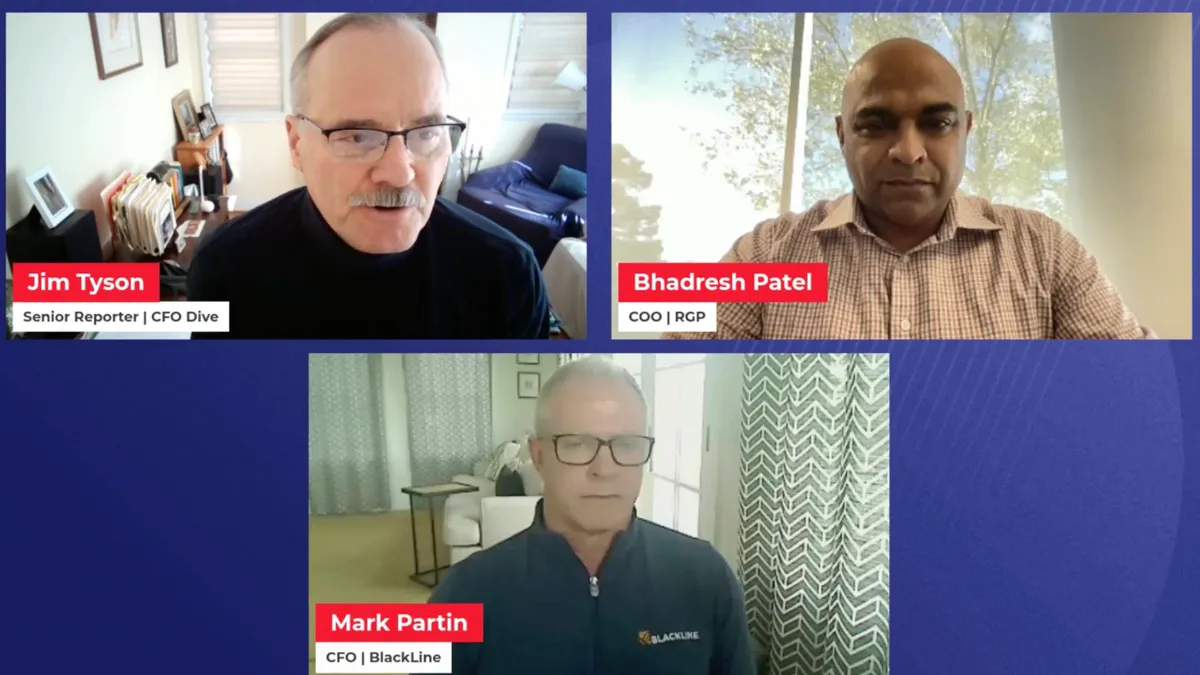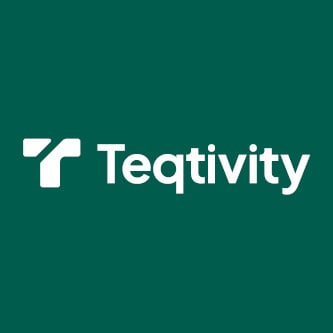Editor’s note: This article includes insights shared during a recent live event, The CFO-CIO Bridge to a Lasting Tech Foundation, which was jointly moderated by the editorial teams of CFO Dive and its sister publication CIO Dive. The full panel sessions can be viewed here.
From the early days of the internet, to the push to mobile apps, cloud computing and more recently generative artificial intelligence, CFOs have wrestled with how, when and what new technologies warrant funding. As the keepers of company coffers, finance chiefs are tasked with holding a tight rein on budgets while also being expected to finance tools needed to keep their organizations competitive.
At the same time, the CFO’s role has evolved over the years to become one of a strategic growth partner for leadership, who sets success and failure milestones for tech investments, Mark Partin, CFO of enterprise software company BlackLine, said during the recent CFO Dive-CIO Dive event.
Long gone are the days of a green eyeshade contingent that would simply approve or deny budget proposals. In the case of tech, complicated enterprise resource planning systems and costly AI initiatives have pushed finance chiefs and chief information officers to team up to identify and track new tech projects throughout their life cycles.
“CFOs were the Dr. No for so long. Then we became growth, strategic-oriented, let’s put money to work. Now we’re in the profit, rule-of-40 life,” Partin said, referring to a popular growth metric, which states that software companies’ growth rate plus profit margins should exceed 40%. “You have to be able to dredge or carve out money to put to work but you also have to define those metrics of success or failure so that you can pull back when they’re not working.”
When it comes to AI, that balancing act comes with a particularly tricky twist; gauging the technology via the traditional yardstick of return on investment is challenging because data is harder to observe and price than more traditional assets like buildings and employees, CFO Dive previously reported.
Here are six tips stemming from lessons learned and experiences shared by the panelists on how CFOs, CIOs and other C-suite leaders can work together to get the biggest bang for their firm’s buck on technology.
1) For ROI, consider multiple measures. Developing a solid ROI on an AI project that a CFO can “take to the bank” is really hard, Partin acknowledged. Two measures he uses focus on either productivity gains or cost avoidance – meaning hourly work saved. In the case of a proprietary AI companion that BlackLine is developing, there are different sets of numbers, including that it has been rolled out to 50% of employees in 15 languages in 15 countries. But the ROI on the project is saving 3,000 to 4,000 hours worked a month, he said.
2) CFOs must make time to dive into tech. Productive CFO-CIO relationships are built on trust, according to Ryan Downing, VP and CIO of enterprise business solutions at Principal Financial Group, a global investment management firm and insurance company. The last few finance leaders Downing has worked with have spent time building that up by “diving into” his area of business. That, in turn, also helped finance better understand the company’s growth drivers so that, for example, when a tech expense goes up, they know there is a silver lining: it means more people are interacting on a digital basis with the company, he said.
3) CFOs help CIOs keep the score. Jaime Montemayor, chief digital and technology officer at General Mills, said his partnership with the company’s CFO Kofi Bruce has evolved over the course of their work on the consumer food company’s tech modernization initiative. At first, the team focused on figuring out funding for the tech upgrade, which Bruce and his team helped secure. The second phase involved the finance team helping identify specific business cases and value streams to target. The third stage has entailed the finance team helping the company track impact. “As we have built the capabilities and deployed them across the company, the finance team is the one that is helping us keep the score,” Montemayor said.
4) Avoid tech solutions looking for a problem. As the early hype cycle around AI persists, it’s important to stay disciplined when vetting technology, experts said. “Vendors are creating new capabilities where it’s a little bit of a solution looking for a problem,” Downing said. Instead, companies need to make sure they flip that approach. “We have to first make sure we’re thinking about our process to say, ‘What’s the best way to solve a problem?’”
5) Look for the “pockets” to apply new technologies. Bhadresh Patel, COO of global consulting firm RGP, said his firm broke down the concept of generative AI into “pockets” of use cases where it could get productivity, revenue, or cost efficiency gains rather than trying to find a way to apply it more broadly. “I think you have to be very careful with that because you can get carried away in coming up with thousands of use cases which you can employ for your organization,” Patel said.
6) Cybersecurity budgeting requires important but, yes, sometimes “boring” legwork. To properly protect your firm from cyber risks, it’s critical to understand the systems you are protecting because you can’t protect what you don’t know you have, according to Jonathan Fairtlough, partner and principal, cyber threat management at KPMG. A mistake he sees companies continually making is that they focus on the high-level risk rather than gathering the basic information on the hardware, software and data they have to safeguard. “This is boring work...It's not a cool tool set,” Fairtlough said. “But when built out properly, it provides insight both to what you're protecting and what the spend around those different tools are.”






















